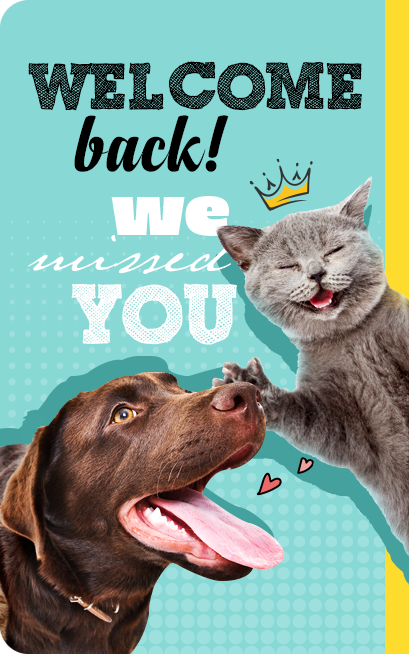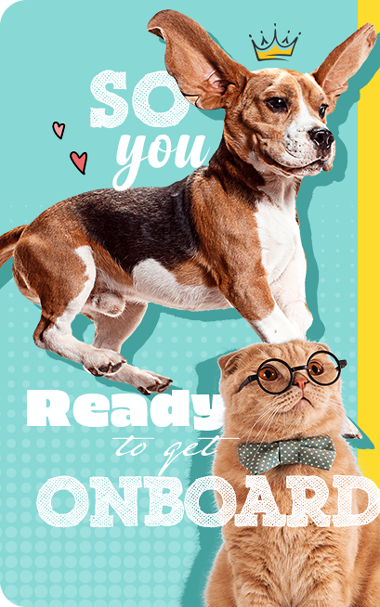Do's and Don'ts for Pets While Eating
Posted by Muskan bhardwaj on

Introduction
Good eating habits are very necessary for the well-being of your pet. Making sure your pet gets the right food in sufficient quantities and in the right way can save your pet from many diseases and lead to a long, healthy, and happy life. Following are the do's and don'ts in great detail while your pet is eating:
Do's
1. Give a Balanced Diet

Such a diet will be valuable for your pet's general health. It should be balanced and adequate for the species, age, size, and health condition of the pet. Dogs and cats have different nutritional requirements: dogs are borderline omnivorous, while cats are strictly carnivorous.
2. Life Stage Requirements

Puppies and kittens have higher calorie, protein, and fat requirements to support their growth. Adults have their maintenance diets, while seniors may need food that has fewer calories and has special nutrients to support the aging joints and organs.
3. Regular Feedings

By establishing consistent meal times, a routine can be established that will prevent both over- and under-eating.
Keep Meal Times Consistent- Feed your pet a meal at the same times daily. This will help condition their digestive system and reduce the likelihood of nervous storming that often accompanies variable meal times.
Number of Meals The number can be varied depending upon the age and health conditions of your pet. Puppies and kittens require much more feeding compared to adults, who can thrive on two meals every day.
4. Hydration

Pay attention to how much your pet is drinking. Decreased drinking may indicate health conditions such as kidney disease or diabetes.
Fresh Water Availability Water is one of the vital nutrients for your pet's health as it helps in digestion and absorption of nutrients produced from the feed and temperature control. Accessibility Always make fresh clean water easily available to your pet all the time but particularly when he needs it the most, i.e. during and after meals.
5. Feed in a Quiet Place

A quiet feeding place with as little disturbance as possible is handy in minimizing stresses and other disturbances to make your pet eat slowly and at ease.
Designated Area: Select a special place for feeding, away from high-traffic areas and loud noises.
Ensuring that the feeding area is safe and comfortable without any kind of distractions or hazards.
6. Monitoring portion size

Proper portion size shall avert the problem of weight gain and other health problems. Feeding Instructions: Feed your pet according to the portion sizes that are suggested in the feed's sachet instructions and alter it according to your pet's activity level, age, and weight.
7. Nutritional Concerns

Seek advice from your vet regarding what, and how much, to feed your pet, and if you have any concerns about eating habits.
Health Problems: If you have a pet eating more or less than usual or develop vomiting, diarrhea, lethargy, or other signs of illness, consult your veterinarian.
Don'ts
1. Don't Feed People Food

Many human foods are toxic to pets. They can cause severe health problems.
Toxins in food: Do not feed human food, including grapes, raisins, avocados, and chocolate or nuts, to pets.
Imbalanced Diets: Meals derived by feeding human foods can break the balance of nutrition that a pet needs to consume, leading to either deficiencies or excess of other nutrients.
2. Portion Control

Overfeeding is perhaps one of the most dreaded practices that could expose them to obesity, diabetes, and other complications.
Recommended Portions: To feed the pets to their recommended body condition in terms of weight, and activity, ensure to stick to the recommended portion sizes.
Treats: Keep treats limited to a tiny percentage of your pet's overall caloric intake for the day. Too many treats can quickly add up to excess calories.
3. Disturbance

Do not pet, play with, or do anything to upset your pet while eating since it may cause food aggression or nervousness.
Consistency: Always allow your pet to complete their meal
Refuse from offering treats or disturbing your pet and allow the pet to complete.
4. Don't change a Diet suddenly

Abrupt changes in diets can cause gastro-intestinal upset which causes diarrhoea or vomiting. Policy of Gradual Transition: In switching of foods; mix the reduced quantity of new food with an old diet or the food in use gradually increase or change it to new food in 7-10 days. Monitor for signs of digestive upset during the change. If any problems occur slow your change.
5. Do Not Free-Feed

Free-feeding leads to overeating and spoiled food.
Feedings: This will provide the food at specific times and remove uneaten food after about 20- 30 minutes.
Freshness: This serves to keep the food fresh and eliminates your pet's ability to graze all day long, which leads to obesity.
6. Do Not Provide Your Pet Bones

It is risky to feed bones of any type, but specifically cooked bones. Bones splinter and can result in choking or cause internal damage to your pet.
Safe Alternatives: Use pet-friendly chew toys and treats to help reduce this seemingly unavoidably compulsive habit. Altered Feeding Habits Should Not Be Dismissed Your pet could be experiencing a health emergency if it is no longer as eager to eat.
Conclusion
Healthy eating for pets is based on a balance of a proper diet and regular feeding routine, by observing changes in your pet's behavior and health. Follow these do's and dont's, and you will be assured of having a healthier and happier pet—one with whom sharing years will not be a problem. Your veterinarian is always available to answer any questions or address your concerns about your pet's diet and health.






